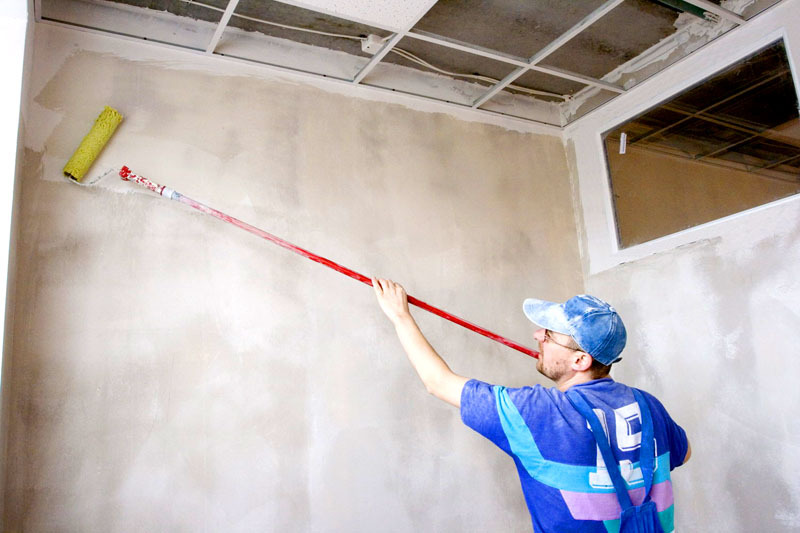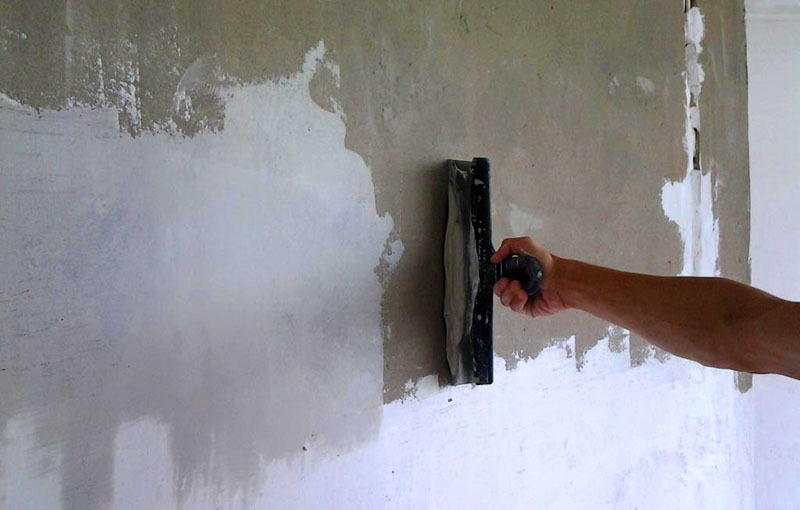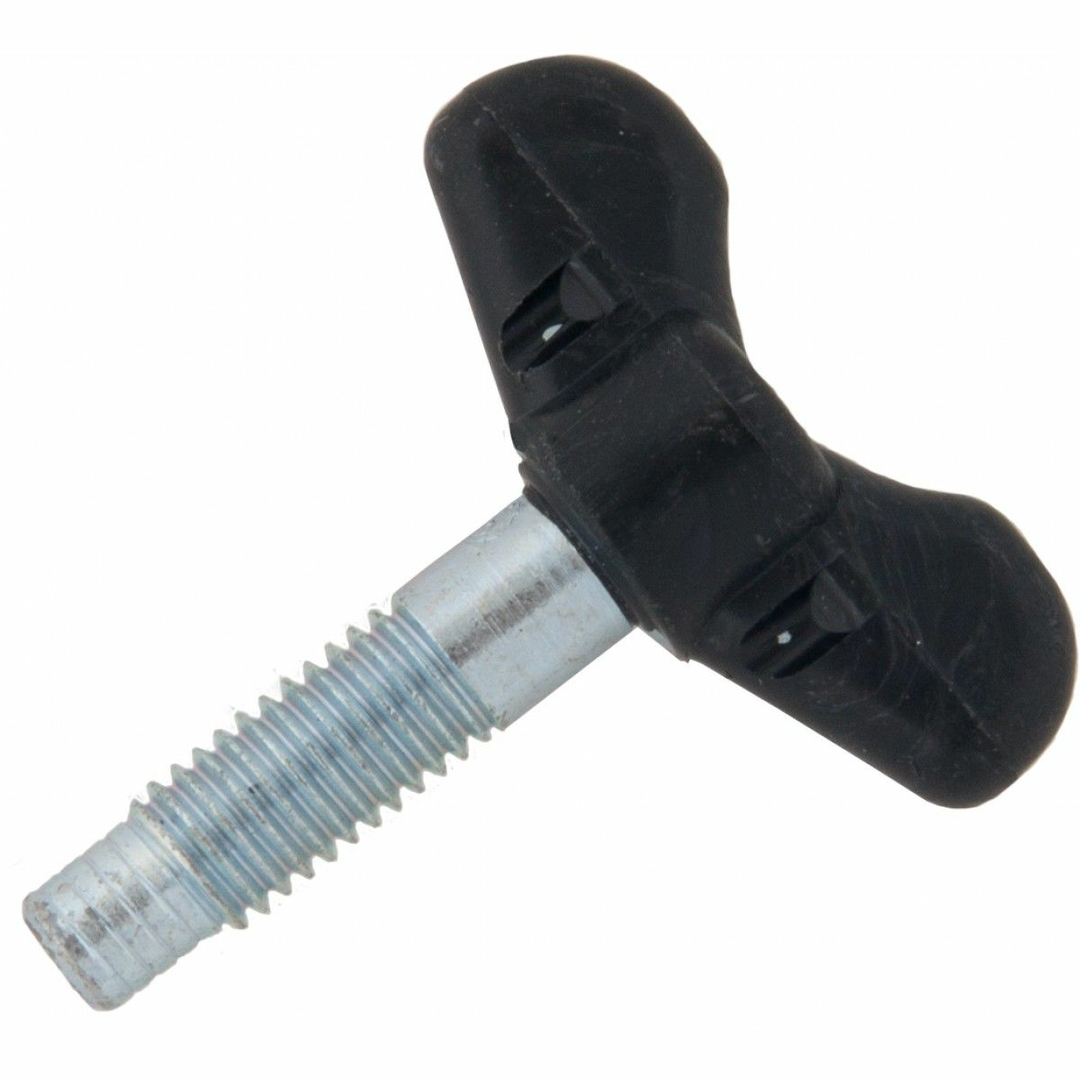Wallpaper was and remains the most popular finishing material. Over time, it is necessary to replace them with new canvases or another type of finish, and for this it is necessary to remove the old coating. At first glance, this is quite simple, but in reality it is not entirely true. In the HouseChief review, our experts will tell you how to quickly and easily remove old wallpaper from the walls, what methods and means exist for dismantling.
Read in the article
- 1 Preparatory work
- 1.1 Tools
- 2 Methods and means for removing wallpaper from the wall
- 2.1 Dry method
- 2.2 Wet way
- 2.3 Wallpaper remover
- 2.4 "Mole"
- 2.5 Steaming
- 3 Removing wallpaper from different materials
- 3.1 How to strip textile tapestries
- 3.2 Removing vinyl wallpaper
- 3.3 The better to remove non-woven wallpaper
- 3.4 How to remove washable wallpaper
- 3.5 How to remove liquid wallpaper from walls
- 3.6 Removing wallpaper from other materials
- 4 How to remove wallpaper in difficult cases
- 4.1 If the wallpaper was glued on PVA
- 4.2 Down with wallpaper from plasterboard walls
- 5 Surface preparation after removing old wallpaper
- 6 A few words in conclusion
Preparatory work
Before removing boring or worn-out wallpaper, it is necessary to carry out certain preparatory work. This will make it easier to remove the old finish and apply the new one.

Before removing the wallpaper, you need to do the following:
- remove furniture from the prepared room, remove decorative elements and curtains. If this is not possible, carefully cover everything with construction tape;
- cover the floors with whatever material is available. So you will save the flooring, and you will have to clean the room less after dismantling;
- if it is planned to use water to remove boring or dilapidated finishes, then it is necessary to de-energize the apartment or room. You can simply close the sockets with rags or film, but a power outage is a more reliable and safe option;
- when leaving the room, lay any moistened rags so as not to carry dirt throughout the apartment;
- prepare the tools and means to be used depending on the selected wallpaper removal method.

Tools
Before peeling off old wallpaper, in addition to cleaning the room from furniture, you need to prepare an appropriate tool:
- Sharp spatulas - 2-3 pcs.
- Capacity for water.
- Spray.
- Any effective detergent.
- A clean foam roller or kitchen sponge.
- Stepladder or stool.
- Stationery, wallpaper or linoleum cutter.
- Masking tape.
- Iron or steamer.
- A piece of cloth.
- Garbage bags.
- Rubber gloves and respirator.

Methods and means for removing wallpaper from the wall
There are several methods and different means to remove wallpaper from the wall. Their choice depends on the material from which the tapestries are made, and on how firmly they adhere to the surface.

Dry method
The easiest option is to quickly remove the wallpaper. Suitable for those whose canvases are already falling off the wall by themselves. To remove them, it is enough to pull the edge of the trellis, and if the wallpaper is still firmly held in some of the sections, then you can help yourself with a knife or spatula. If this is not your case, move on to the other methods described below.

Wet way
The most common method for removing wallpaper is with ordinary warm water. For greater efficiency, some kind of detergent or grated laundry soap is added to the liquid. The wallpaper is moistened with a foam kitchen sponge or roller, but not filled with water. To make the task even easier, you need to walk over them with a "wallpaper tiger" or make cuts with a knife. After wetting, wait 15-20 minutes for the canvases to swell, and you can peel the trim off the wall. It is better to start with the seams, and if difficulties arise, you can additionally moisten the wallpaper and help yourself with a spatula or knife. This is the ideal way to remove paper trellises. The stripped wallpaper is placed in trash bags ̶ and the room is again ready for decoration.
Wallpaper remover
Manufacturers of wallpaper adhesives also offer effective tools for removing tapestries from different materials. This is a great alternative to the liquid method. Special products are inexpensive, they are non-toxic and, unlike water or soapy water, are better absorbed into the structure of the cloths. The selected composition must be diluted in water in accordance with the manufacturer's instructions, applied to the old finish, wait a certain time and easily remove the wallpaper. The most popular remedies Metylan, Quelyd Dissoucol, Axton, Pufas Tap-ex and Atlas Alpan. These formulations are suitable for paper, vinyl, non-woven and other types of wallpaper.

"Mole"
Few people know, but the popular special solution for cleaning pipes "Mole" is excellent for removing wallpaper that adhere firmly to the wall surface. The composition is diluted with water 1: 2, applied to the trellises, and after 5-10 minutes they can be peeled off.
Attention! When working with any chemical agent, it is recommended to use rubber gloves, a respirator and goggles. So you will save yourself from getting aggressive solutions on the skin and mucous membranes.
Steaming
If a professional steamer is lying around on the farm, then you are very lucky, and its absence is not a reason to despair. Our people are strong in their ingenuity and figured out how to peel the wallpaper from the wall using a piece of damp cotton cloth and an iron with a steaming function. In order to use this method, certain skills are required, since you need to act very quickly. The area with wallpaper is processed with steam from the device or with a damp cloth ironed with a well-heated iron, and the cloths are quickly torn off.

We suggest that you watch the video, which explains how to remove wallpaper from the walls.
Removing wallpaper from different materials
The method of removing wallpaper from the wall depends largely on the material from which it is made. So, for example, if paper canvases can be easily removed with the help of plain water, then this will not work with fabric or non-woven tapestries.

How to strip textile tapestries
Textile wallpaper consists of a base ̶ non-woven or paper ̶ and a decorative textile layer. Textiles can be very different: silk, linen, jute, etc. The two-layer structure of the wallpaper makes it difficult to remove it from the wall. To remove textile wallpaper, you will need a steam generator or an ordinary iron with a steamer. Steam quickly penetrates the decorative layer and softens the glue. Since it takes about 30 minutes to process one area, it is better to use a steam generator. For greater efficiency, you can use the "wallpaper tiger" or add a special agent like Metylan or Quelyd Dissoucol.

Removing vinyl wallpaper
Vinyl wallpaper is a PVC layer glued to a paper or non-woven base. You can remove them with plain water, but there are some nuances. Use a spatula, knife or "wallpaper tiger" to break the decorative layer of polyvinyl chloride, saturate the wallpaper with liquid and wait 15-20 minutes. After the paper base is soaked, the canvases will be removed in whole strips. If necessary, you can help yourself with a spatula. Some craftsmen add glue to the water so that it does not drain so quickly and softens the paper base better, and also use special means for removing wallpaper.

The better to remove non-woven wallpaper
This type of wallpaper is made of pure non-woven fabric or in combination with another material (textile, paper or PVC). The method of removing such webs is practically the same as described above. You can moisten the wallpaper and remove it with a spatula, or pre-perforate it. If the non-woven layer is firmly adhered to the wall, then you can leave it as a base for new canvases.

How to remove washable wallpaper
A durable decorative layer of washable wallpaper, which is their main advantage, is also considered a disadvantage. The tapestries must be removed in layers, for which you must first perforate their decorative surface, moisten with water and strip off in strips. It should be moistened several times, and if this does not help, then you will have to use the steaming method.

How to remove liquid wallpaper from walls
Liquid wallpaper is more like decorative plaster. Due to the fact that they are mainly composed of cellulose, cotton fibers or silk, they will be easy to remove. It is necessary to moisten the surface well, wait until it swells, and remove the finish with a spatula or scraper. If you really want to, the ripped off wallpaper can be reused.

Removing wallpaper from other materials
Slightly less often than the above wallpapers, fiberglass canvases are used for wall decoration. They cannot be removed with water, since they do not allow moisture to pass through. You will need a knife and a special tool to remove these types of wallpaper. Make cuts, apply liquid to the finish, wait for the time indicated in the instructions and rip off the canvas from top to bottom.

Self-adhesive wallpaper is easy to install, but problematic to remove. Removal is carried out in 2 stages, and in addition, you will need a hairdryer, sandpaper, water or a special tool, a solvent, a spatula and a sponge. First, the top layer is soaked, after a while it is removed, and an adhesive base remains. To remove it, you need to warm it up with a hairdryer and remove it, helping yourself with a spatula. However, there is still a glue mark on the wall, which can be removed with a rag and solvent. Then, it is advisable to sand the surface of the wall with sandpaper.

How to remove wallpaper in difficult cases
For various reasons, the above methods of removing wallpaper may not help. Consider the options for difficult cases when the canvases are not removed with water or special means.

If the wallpaper was glued on PVA
Wallpaper glued to PVA sticks firmly to the wall, but it is also problematic to remove. Some people add soap or vinegar to the water for better soaking of the canvases, and sometimes both. You can go a quicker way: remove the wallpaper with a spatula from areas where it lends itself, and remove the rest with a grinder. However, in this case, there is a possibility that you will damage the surface of the wall, and it will have to be leveled. You can also use the steaming method.

Down with wallpaper from plasterboard walls
Drywall is used in decoration to quickly align walls and ceilings. However, removing old wallpaper from it is quite problematic, since you need to preserve its protective layer of paper, so that water will not work. Special equipment can only be used if the tapestries are glued to plastered drywall. Some craftsmen use the cheapest wallpaper glue for removal, which dries for a long time and manages to soak the canvases with moisture so that they practically lag behind the surface themselves. You can also try steaming.


A comment
Mikhail Starostin
Head of the team of the repair and construction company "Dom Premium"
"If it is planned to paste over the drywall with wallpaper, then it must be putty so that you do not have any difficulties in dismantling them later."
Surface preparation after removing old wallpaper
After the walls are cleaned of old finishes, you need to prepare them for applying a new one. Many neglect this stage, but in vain, because the quality and durability of the future decorative coating depends on it.
Regardless of the type of new finish, the following work must be performed:
- Cleaning from dust and dirt. After removing the wallpaper, bumps from dried glue and dust often remain, so the walls must first of all be well cleaned.
- Disinfection. It is always advisable, regardless of the purpose of the room, to treat the walls with special antifungal compounds. They will help prevent the growth of mold and disease-causing bacteria.
- Padding. When treating the walls with a primer, the adhesion of the finish to the surface improves, the moisture absorption decreases, therefore, the consumption of materials is reduced and the putty dries faster. Usually, priming is done with a roller and in one layer, but if the composition is quickly absorbed, then it is better to process the wall again.
- Plaster. If there are no significant defects on the wall, then this step can be skipped. For large pits and bumps, it is necessary to plaster the surface, especially if painting or gluing thin wallpaper is planned.
- Putty. It will make the wall perfectly flat and smooth, which affects the quality and durability of the finish.
- Finishing priming.


A few words in conclusion
Wallpaper can get bored at any time, and you want to update the design, and for this you need to remove the old canvases. We have talked about the most common and effective ways to remove tapestries from the wall, but perhaps you have your own proven methods that you can tell us and other readers about. We are looking forward to your comments and suggestions.


